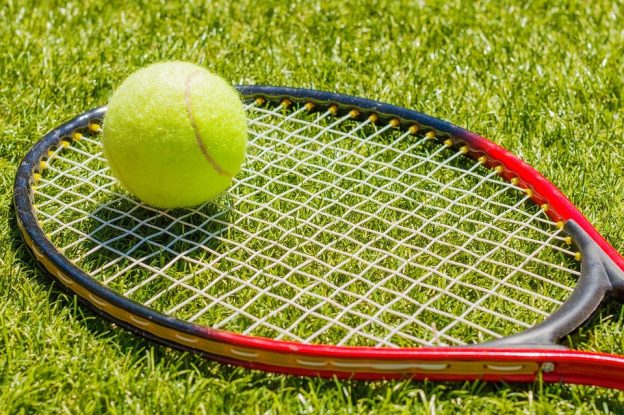Holabirdsports.com offers a wide variety of tennis apparel at affordable prices.
Inflated tennis ball, closed rubber ball feels about 2.7 inches in diameter. The usual color of a tennis ball is yellow, although it may give off a green feel due to its neon nature.
History of the Evolution of the Tennis Ball
- Previously, tennis balls were made of various materials, such as
- Leather and filled with hair or wool
- The belly of a sheep or goat, wrapped in wool and tied with rope
- Animal fur
- Pine wood
- A rope made of animal intestines and muscles
However, modern tennis balls appear to have their origins straight from those made in the 18th century. The pieces of wool (3/4 inch long) were wound tightly around the core made of cork. Then the strings are tied around the ball, after which everything is covered and sewn with a white cloth. Tennis balls with a cork core and a cloth covering are still used in the original game of tennis, which is now known as, Real Tennis.
Modern tennis balls are made of vulcanized rubber (rubber cured with sulfur), a very durable and strong compound, with the right consistency. The most expensive material in a tennis ball is felt, which can be adjusted in different ways to change the properties of the ball. The flavored steaming enhances naps and makes the substance smoother. This improves ball wind resistance and control, while reducing bounce and speed. A compact nap causes the tennis ball to jump upon hitting the racket or hitting the ground.
Types of Tennis Balls
The two main types of tennis balls are:
Pressurized – Such a ball has a hollow core, filled with nitrogen. The pressure lasts for about a month, after which the ball becomes ‘dead’.
Pressureless – This type of tennis ball has a solid core and is suitable for those who train themselves in the game. The ball doesn’t lose its bounce that easily. However, it is possible to feel a tantrum immediately.
Some of the other types of tennis balls are:
Regular duty tennis ball – These are intended for use on indoor and clay courts.
Extra duty tennis ball – It should be used on grass and concrete tennis courts. If used on clay, the ball may be too fuzzy.
Altitude tennis ball – This is used in high altitude areas, such as Denver, where the ground is 4000 feet or more above sea level. The regular ball has a greater bounce at an elevated rate.
To buy superior quality tennis balls at a reasonable rate, visit www.holabirdsports.com.
